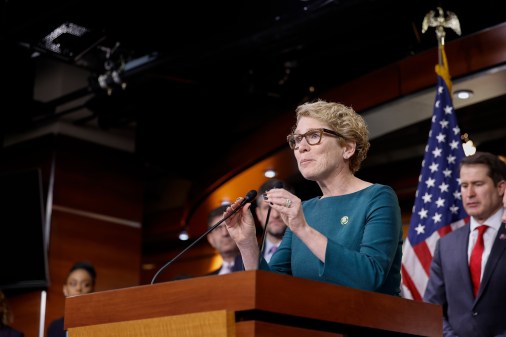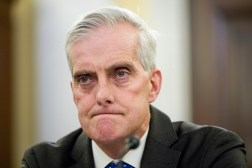VA teases plans for new ‘state-of-the-art’ digital health platform

The Department of Veterans Affairs hopes to unveil plans for its agile, “state-of-the-art” digital health platform later this year, CIO LaVerne Council said in testimony.
While the hearing before the House Committee on Veterans Affairs’ Subcommittee on Health generally focused on VA’s planned technical improvements to veterans’ ability to schedule medical appointments, Council took time to describe why it’s important now — in the middle of several contentious and ongoing major health IT projects, including driving interoperability with the Defense Department — to plan and build a veteran-centric digital health platform for the next 25 years and onward.
“The EHR [electronic health record] today is really just the heartbeat of the organism, and it does not have everything that is needed to mandate and manage care in the community, to deal with the needs of the female veteran, and also to support the overall veteran experience and the clinical management,” Council said at the hearing Thursday.
“We decided what the right thing to do was to lay out the new digital health platform, because that’s really what’s needed for the future. If [the Veterans Health Administration] is going to provide health care in the future and today, it needs to move into a digital platform, and that’s what we laid out,” she said.
She and VA Undersecretary for Health David Shulkin, after producing a business case last fall, decided to move forward with building a modern and integrated health care system that would incorporate best-in-class technologies and standards to give it the look, feel and capabilities users have come to expect in the private sector. Council plans to deliver to Shulkin later this summer a working prototype, which he will test from a clinical perspective.
“What I can tell you is it is incredibly responsive,” Council testified. “It is aligned with the world-class technology everyone’s seen today and using in things like Facebook and google and other capabilities. But it also is agile and it leverages what is called a FHIR [Fast Healthcare Interoperability Resources] capability … which means we can bring things in, we can use them, we can change them, we can respond.”
FHIR is an international open-source standard that is taking the health care interoperability world by storm. Created by nonprofit group HL7, the FHIR API and structured data format, which allow for secure and trusted information flow, have been promoted by numerous health care organizations, including the Department of Health and Human Services and the Office of the National Coordinator for Health IT, and medical providers. Council said she wants the VA, as the largest health care integrator in the U.S., to drive that platform forward.
Perhaps the biggest change in the new platform would be its all-in-one integration in the cloud. Whereas VA’s current EHR platform VistA, short for the Veterans Information Systems and Technology Architecture, is a collection of 130 separate systems.
“We have 365 data centers within the VA, 130 instances of VistA, and 834 custom systems,” Council said. “In addition, they’re spread out … And it was built as it went. It looks like nothing that you’d see in private industry, and fundamentally, what we’re laying out is a digital health platform that will get us there.”
She added that the problem with VistA was “an integration issue … Everything’s separate, and that is the root of the issue.”
“That’s why we need to get to a new digital health platform,” she explained.
Citing VA’s history of bouncing back and forth between building health IT systems and giving up on them after investing millions of tax dollars, lawmakers balked at the idea of VA developing another major platform. They seemed especially concerned that — like the current inflexible VistA system — the platform would be left behind by future changes in health care technology.
“The frustration we have is we keep hearing about great systems, and then we get halfway into it, and then it didn’t work, so then we gave that project up,” said Rep. Ann McLane Kuster, D-N.H.
Rep. Raul Ruiz, D-Calif., said flexibility was a requirement of any system VA builds or buys — the system used today shouldn’t be the same exact one used 15 years later, he said. “We don’t want it to last 15 years. We want it to change with the needs of the patients and the community.”
The VA senior officials agreed, but Council maintained the need to start out with a unified vision for a standard platform.
“You don’t have to get 100 percent of the solution in place to start,” she said. “You can start with 20, 30, 40 percent and just get better over time. But that requires a standard platform, it requires one instance, one solution, and a process that everybody uses, and that was not how the VA was built.”
Dollars weren’t discussed for the new system during the hearing, but Council said the cost-benefit analysis checked out.
Her team looked at “the overall long-term ability to maintain it, what it would take if we wanted to change it, how could we get it on to an architecture that is more agreeable and agile so it can move and change as health care is changing, and also how would we work with the care in the community,” Council said.
“Fundamentally,” she added, “four things need to be in a health care system: You need to have clinical management, you need to have hospital operations capability, you also need to have the veteran experience core to what we offer, and you have to have predictive analytics. We do not have that today with VistA. So we decided to pull and build the new digital health platform to address it after reviewing that business case last fall.”
With little time left under the current administration and likely as leaders in their respective positions, Shulkin and Council felt this was the right leap to take for the long-term benefit of the VA, a department whose health IT had been plagued by problems long prior to their arrival.
“We believe that VA is an innovator,” Council said. “We believe that VHA and health care should continue to be one, and we have provided innovative solutions based on industry experts coming back and assessing it as that.”





